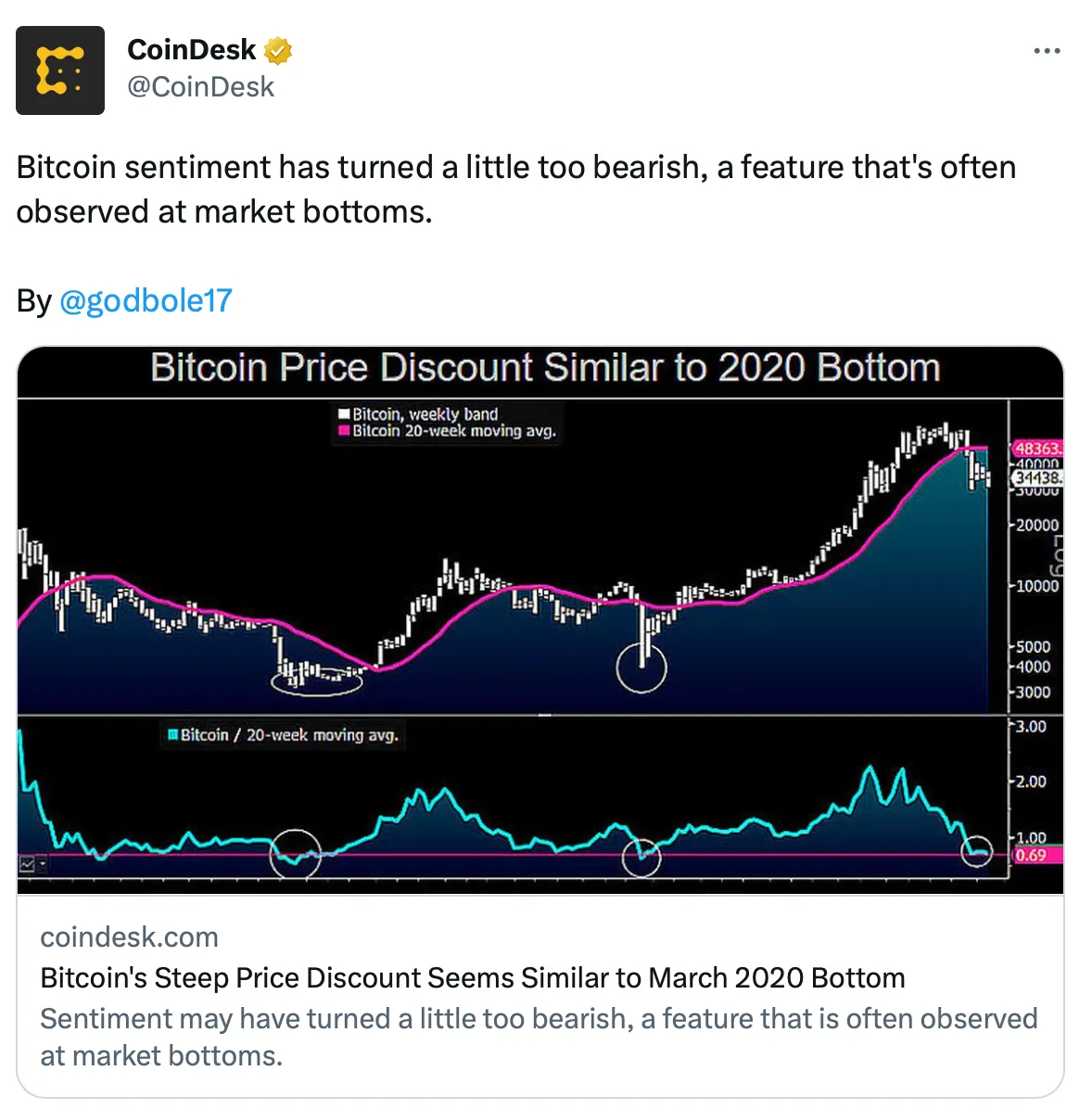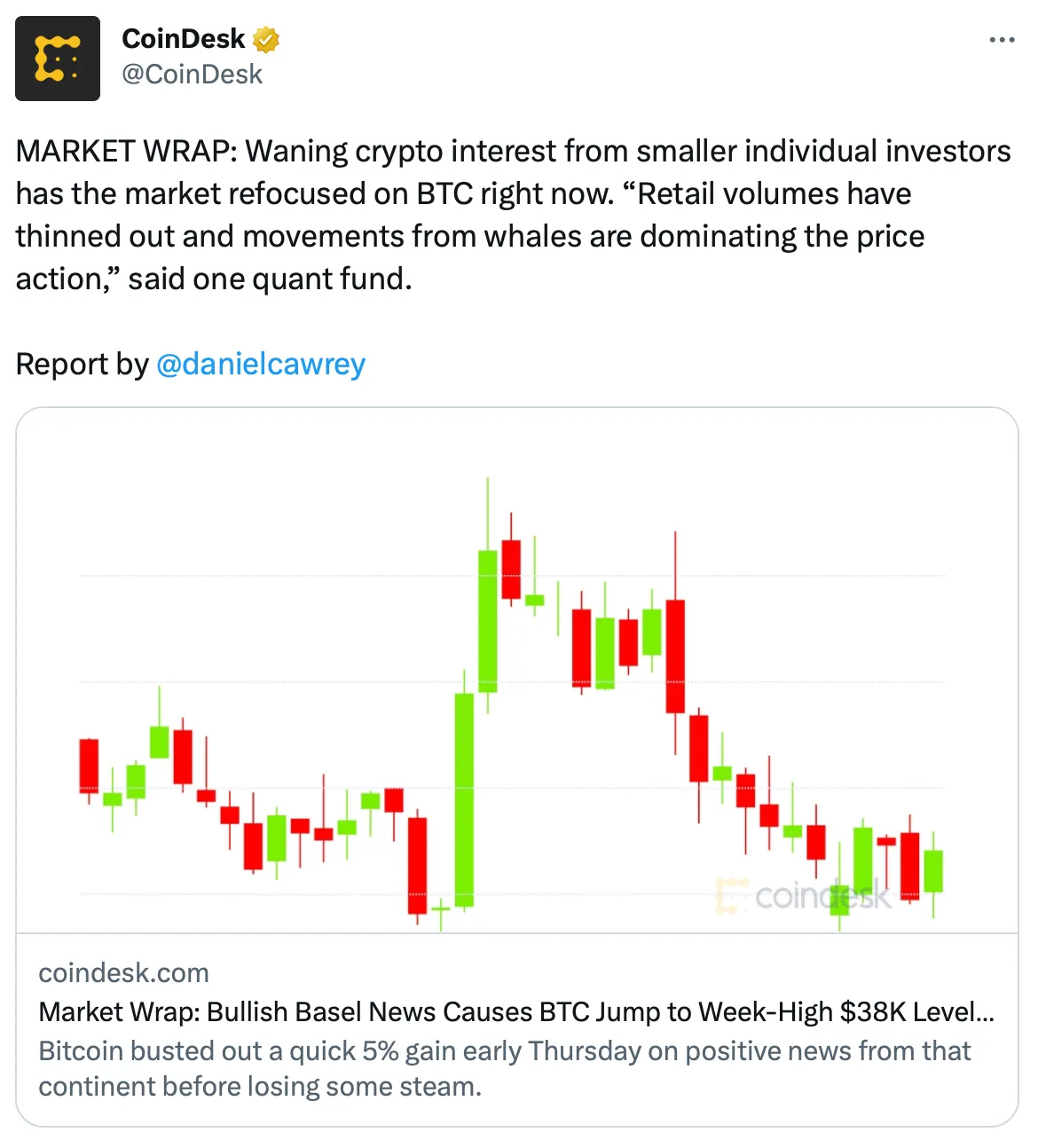Bull & Bear Markets Explained

Cryptocurrencies are impacted by sentiment, regulations, and government actions and are often bought as speculative assets. Understanding the terms "bull" and "bear" market is crucial for grasping price dynamics.
A bull market means prices will go up, while a bear market means prices will go down. Typically, a shift to either market is defined as a 20% correction from the previous phase. "Bulls" and "bears" are important in crypto market analysis and trading, but they're not clearly defined.
Crypto markets can be highly volatile and show significant movement compared to traditional finance. Despite ongoing trading fluctuations, market direction is often dictated by an overall sentiment. Market labels can impact prices and become self-fulfilling prophecies. Watch for momentum shifts.
Origins of The Terms
The "bull" and "bear" market terms, common in traditional finance, have been adopted in cryptocurrency as well, despite their unclear origins.
The term "bear" for falling prices comes from the North American bear skin trade. Traders would sell skins before trapping the animals, anticipating a decrease in value. This led to the phrase "to sell the bear's skin before one has caught the bear.” Like counting chickens before they hatch, the preemptive fur trade was a risky but generally accepted strategy seen as profitable.
The term 'bears' became popular after the 18th century South Sea Bubble. It describes the practice of borrowing and selling shares, only to buy them back at a lower price - now known as short selling.
The term "bull" may have come from the 1600s London Stock Exchange, where 'bulletin' posts to buy stocks boosted prices, which then fell in the absence of buyers. "Bear" may have stemmed from traders selling animal skins prior to trapping, anticipating price drops, inspiring the saying, "to sell the bear's skin before one has caught the bear." Some theories link the terms to bull and bear fights symbolizing market movements, but this lacks substantial evidence and is considered oversimplified.
Bulls & Bears
Bulls and Bears are associated with trading, regardless of origin. In New York's financial district, there is a 3,200 kg bronze bull that stares at tourists.
The Charging Bull appeared in December 1989, representing market optimism after the 1987 Black Monday Crash, which caused the biggest daily decline in the Dow Jones Industrial Average by 22.6%.
Crypto Price & Narrative
In financial markets, narratives are crucial due to their inherent unpredictability. This is especially true in the misunderstood and relatively young crypto industry.
Crypto prices don't always follow a simple bull or bear market trend. There are nuances and domain-specific narratives to consider. Unlike traditional financial markets, crypto is open and decentralized, with 24/7/365 availability and no trading hours. The markets never stop.
The cryptocurrency market is volatile and speculative, with different groups participating, like professional traders, institutions, miners, and recreational investors, each with their own reasons, preferences, and risk tolerance.
Time preferences refers to whether someone is focused on receiving benefits today (high time preference) or in the future (low time preference). Holding (hodl) Bitcoin is often considered low time preference, while day trading is high time preference.
Crypto's predictability leads to narratives like Bitcoin's halving cycle; a four-year adjustment in miner rewards for adding new blocks to the blockchain.
Bitcoin is a commodity with a limited supply of 21 million coins. The issuance is gradually reduced through the process of halving, with 6.25 new coins added every 10 minutes today. The maximum supply will be reached in 2140, as the issuance continues to decrease, reaching 3.125 in 2024.

Although halving mechanics are objective and prices typically increase shortly after, it's unclear if this is due to the decrease in supply and consistent demand or if halvings are just common knowledge and thus always priced into the market.

Understanding crypto prices is challenging due to the complexity of narratives such as bull/bear markets. Pay attention to experts' use of "bullish" and "bearish" on Twitter to assess their beliefs.

Crypto markets now move in tandem with traditional stock markets, contrary to earlier predictions that they would function as a hedge against stocks. Initially seen as an alternative investment for portfolio diversification, crypto has now become more closely tied to stock market rallies and dips.
From 2021 to 2023, crypto and stock markets have become more correlated. A recent study by Georgetown University shows this trend.
During times of high market volatility, such as the Black Monday 2020, the value of crypto seems to be more closely tied to the stock market. For instance, on that day, Nasdaq lost 12% while Bitcoin lost 50%. Other major events, like the Covid19 pandemic and Russia's military action in Ukraine, have also shown similar results and strengthened this correlation.
Markets may change, and it's unclear why or when, but patience can yield benefits in both Bull and Bear markets. Accept them as a natural part of the market cycle and stay calm while hodling.
Remember: Savl does not offer legal or financial advice. This blog piece should be used to help you form and shape opinions but cannot replace individual financial due diligence.
___
Thank you for reading this piece and if you have any questions, feel free to reach out via Telegram @savl_support or join the conversation on Twitter @Savl_official.

